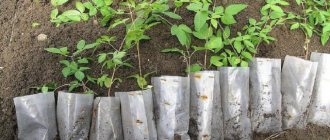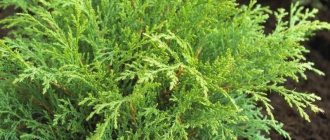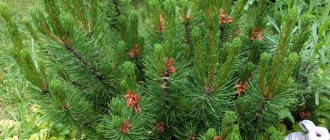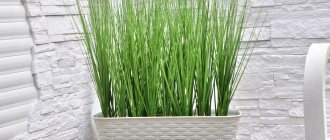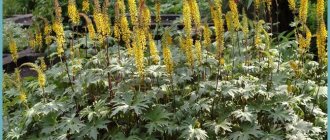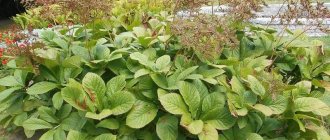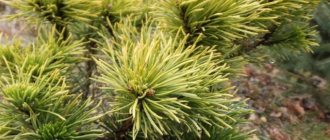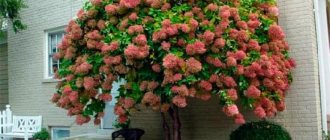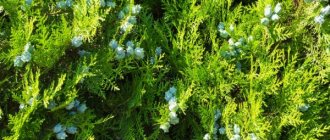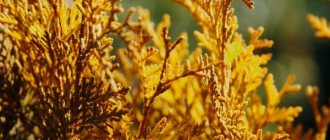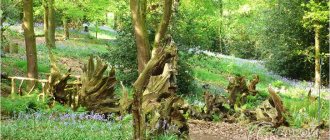Among the huge variety of plants, only a few are recognized as suitable for creating a lawn - a bright green, delicate grass carpet with dense, mechanically resistant turf. These include white clover, also known as “curly honey plant” or “white clover”.
The following article is devoted to the characteristics of this plant, the topic of which is creeping white clover: planting and care.
Clover: varieties and varieties
The plant belongs to the legume family. There are more than 300 species of clover, of which about 70 grow in post-Soviet countries.
Here are some examples of clovers:
- meadow;
- narrow-leaved;
- angular;
- golden;
- mountain;
- Egyptian;
- red;
- pink;
- white.
The last three varieties are the most common. Types of clover differ from each other not only in the color of the flowers, but also, for example, in the structure of the root system.
Thus, red clover takes root to a depth of 2 m (high resistance to drought and cold), while white clover takes root only to 35 cm. There are other distinctive features, including the color of the leaves. Before planting, it is recommended to study the list of species and varieties in order to choose the most suitable one for your site.
To date, breeders have developed many varieties of creeping white clover, for example:
- Rivendell;
- Klondike;
- Sylvester;
- Pipolina;
- Ronnie;
- Volat;
- Dukhmyan.
The last two varieties were bred in Belarus.
Clover is excellent for growing lawns due to the following qualities:
- aesthetic appeal: dense grass of lush green color, blooming twice a year with fragrant and beautiful white buds in the shape of a ball;
- tender, soft shoots: it’s pleasant to walk on the lawn barefoot;
- resistance to trampling: outdoor games on the lawn do not cause any harm to it.
In grass mixtures, clover supports cereals well, especially ryegrass. In this proximity they grow better and the lawn acquires a rich color.
The popularity of the plant is due to other advantages:
- survivability. Clover grows well in any soil, both in illuminated areas and in moderately shaded areas. It tolerates a lack of moisture and does not need fertilizing. For a novice gardener, this is the best option;
- dense and strong root system that holds the soil together. This makes clover suitable for planting in areas with a steep slope;
- low cost. Clover seeds are available for self-collection. At the same time, they have good germination;
- suitability for consumption by domestic animals and poultry;
- ability to improve soil. Clover roots contain bacteria that enrich the soil with nitrogen. Vegetable crops planted after clover give a rich harvest.
Disadvantages of clover:
- the plant aggressively displaces all others, spreading quickly. It is necessary to protect the garden and flowers with a weak root system from clover. The positive side of this property is the ability to displace weeds;
- blooming clover strongly attracts bees and other stinging insects, so site owners must be careful during this period;
- After rain or watering, the grass becomes slippery. It is not recommended to run on the lawn at this time, and you should walk with caution;
- when the grass is strongly grown, it attracts vine slugs and snails due to the increased humidity in the thickets. Therefore, it is important to mow the lawn in a timely manner;
- After a haircut, it loses its attractive appearance for several days until it recovers.
For a novice gardener, clover is the best option.
Halo of growth
The herbaceous culture spread throughout North Africa, Asia Minor, Western and Central Asia and almost all of Europe. In addition, creeping clover can be found in tropical South Africa, Asia and, less commonly, New Zealand and Australia. In Russia, the plant lives in the European part of the country, the Caucasus, the vast expanses of Siberia and the Far East.
Creeping clover prefers to germinate in fields and meadows, near roads and ponds, in pastures and garden plots.
The plant often fills crop lands, so farmers classify it as a weed. It loves moisture and light, and is resistant to frost. Gardeners sometimes plant clover to decorate flower beds. It spreads quickly throughout the area, does not allow other weeds to appear and is easy to care for.
We recommend that you familiarize yourself with the composition of corn
Planting white clover in open ground
Clover planting is planned for spring, when the average daily temperature reaches +10 – +130C. Most often this is April - May. You can plant the plant in the fall, but before November: the shoots must have time to grow to a height of 7-10 cm before the first frost. In autumn they grow more slowly, so it is important to choose the planting time with sufficient margin.
Clover is planted in this order:
- prepare the soil: dig it up while simultaneously removing plant roots or loosen it
- if the weather is dry, water the area generously a day before planting;
- immediately before planting, the seeds are soaked for an hour in warm water;
- distribute the seeds evenly over the area so that the grass carpet is thick and uniform. The optimal consumption is 500 g per hundred square meters or 320 pcs. per sq. m. If planting material is purchased in a store, the area for which it is designed is indicated on the packaging.
Clover seeds are dark in color, making it difficult to determine how evenly they are distributed. To better navigate, the beans are mixed with sand before planting. The seeds are sprinkled with soil in a layer no thicker than 2 cm.
They also resort to mulching with a thin layer of peat. Then the surface is rolled with a garden roller. This prevents the grains from weathering and washing away, making them less accessible to birds and improving contact with the soil. Shoots appear in about 14 days.
Contraindications
Any medicinal plant contains not only benefits, but also threats. If used incorrectly, you can achieve the completely opposite result and aggravate the situation as a whole. White clover is not recommended for use in the following cases:
- If the patient is a pregnant woman or a breastfeeding mother. This is due to the fact that the plant has estrogen-like effects, which can lead to hormonal imbalance. At the same time, products and preparations with clover cannot be used not only internally, but also externally.
- Persons who have recently undergone surgery or 14 days before it are not allowed to take drugs and products containing clover. This is due to the fact that clover has a thinning property, which can lead to bleeding.
- It is prohibited to use this plant for medicinal purposes in patients who have suffered a stroke.
- For hormone-dependent formations - fibroids and uterine cancer, ovarian cancer, breast cancer, endometriosis.
- If the patient is deficient in protein S, then using the plant for medicinal purposes will increase the chance of blood clots.
Side effects may include:
- skin rash;
- pain in the muscles;
- nausea;
- bleeding in the uterus;
- headache.
In addition to side effects and contraindications, you should also remember some limitations. Clover is not recommended for use with the following drugs:
- estrogens in tablets;
- contraceptives;
- drugs for the treatment of various liver diseases;
- drugs that tend to reduce blood clotting rates.
Plant care
Clover, like wild grass, feels great without care. But in order for the lawn to look attractive, you still need to do something.
Watering
If the weather is not dry, clover gets by with rain moisture.
Therefore, watering is usually required relatively rarely - once every 7 days or generally from time to time. During droughts, water is supplied more often. Clover, especially red, does not like stagnant water - in such conditions it is affected by a fungus, therefore it is required:
- choose places for planting clover where there is no flooding;
- Before planting the seeds, level the area: if it is hilly, water accumulates in the lowlands;
- on heavy clay soil: place a drainage cushion of crushed stone and sand under the fertile layer.
Water should be supplied in sufficient, but not excessive quantities.
Weeding and removing dried flowers
Allowed only by hand: clover does not tolerate chemical treatment. It is important to pull out perennial weeds by the roots, otherwise they will soon sprout again. It is better to do this after rain, when the ground is soft.
They remain on the stem and make the lawn unattractive because they look unsightly and are brown in color.
Clover is a perennial plant; therefore, it begins to bloom from the second year of life.
A haircut
It is recommended not to grow a clover lawn: as already mentioned, high thickets are actively populated by snails and slugs, which bring death to all cultivated plants in the neighborhood. It is important to trim the lawn after the first flowering (early summer), thereby removing dead wood. This will give the lawn a neat look and make flowering more intense.
Mowing destroys the color of weeds, thus preventing them from reproducing. For clover, which does not allow chemical treatment with herbicides, this is especially true.
Especially if the lawn has a large area. Trimming also prevents the spread of clover itself, which is important for nearby plants with weak root systems.
A clover lawn allows for very minimal maintenance - it will still look quite decent. Grass that is crushed during walking or outdoor play will still be restored. It is necessary to renew the lawn by sowing new grains every 4-5 years.
Plant propagation
Clover reproduces in two ways:
- through seeds;
- vegetatively: it sends out rooting shoots, which is why it is called creeping.
The seeds are easy to collect yourself:
- they pick off the largest withered flowers;
- peel the seeds;
- dry in a warm, dry place, protected from direct sunlight;
- Place for storage in a box or fabric bag.
Seeds of plants that have reached the age of 2 or more years have the best germination.
Diseases and pests
When overmoistened, clover suffers from the development of fungus; the most common diseases are:
- fusarium (fungi from the genus Fusarium Link);
- rust (caused by the fungus Uromyces trifolii-repentis Liro);
- anthracnose (fungus Aureobasidium pullulans);
- ascochyta blight (fungus Ascochyta trifolii Bond);
- brown spot of clover (marsupial fungus Pseudopeziza trifolii Fckl).
The fight against fungal diseases consists of treatment with a 1% solution of colloidal sulfur. Spray twice: when the first signs of the disease appear and then after 8-10 days.
Pollination with ground sulfur or fluff lime is also used. Clover can also suffer from a parasitic flowering plant, dodder. It is devoid of leaves and roots and exists only at the expense of the host plant.
If clover is used for livestock feed, active measures must be taken to eliminate dodder, as it is poisonous and can even cause death to animals.
Dodder
Hay with the presence of such grass quickly becomes moldy, so after mowing the clover is cleaned of the parasite. And even in this case, they are given to animals with caution - with a break of 10-15 days.
If dodder is detected, it is important to mow the clover before the parasite begins to bloom. Mowing is carried out on an area exceeding the size of the fire by 1.5 m in each direction. The cut grass is burned outside the lawn. Another pest is the cyst nematode.
White creeping clover in landscape design
Clover is suitable not only for creating a lawn, but also for filling gaps between buildings, trees, and creating living borders along paths.
This will improve the soil, and maintaining a well-groomed appearance of the site will require less effort - clover displaces most weeds on its own.
This plant is well suited for decorating areas for sports or children's games - due to its resistance to trampling. Thanks to its strong root system, the plant is excellent for improving slopes: dense turf keeps the soil from crumbling and destruction. Clover in its pure form looks especially good in large spaces.
The miraculous properties of a simple shamrock
Creeping clover has been valued since ancient times. It not only helps to heal from a wide variety of ailments. It is also valuable because it is a good honey plant. It’s not for nothing that the kids cut him off: he tastes sweet.
In addition to healing decoctions and tinctures, it can be used to brew aromatic teas, add to soups and salads, which will also be beneficial for the body.
Anastasia, 24 years old
Since childhood, clover has been associated not only with ordinary meadow grass, but also with the aromatic tea that my mother prepared. Now that I have my own children, I’m gradually introducing them to this drink. In the autumn-spring periods, when there are a lot of viruses, it helps the body and activates its protective functions.
Igor, 44 years old
Even as a child, we always picked this grass because it tastes sweet. I value their infusion for its effective action against colds and coughs.
